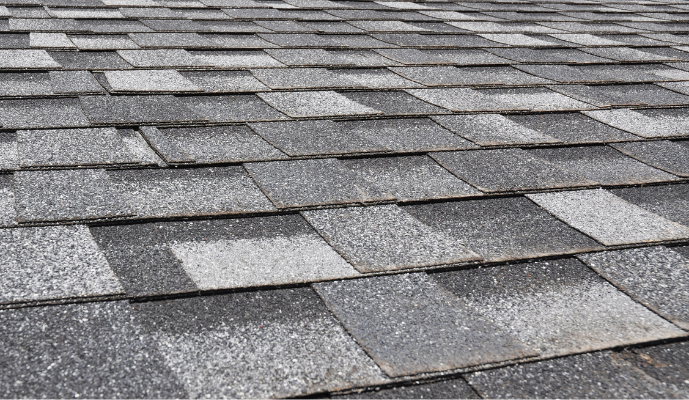Maintaining a sturdy and secure roof is crucial for the protection of your home. Knowing when to replace a shingle roof can save you from costly repairs and ensure the safety of your household. In this comprehensive guide, we’ll discuss the key indicators that it’s time for a roof replacement and share best practices to keep your roof in top condition.
Key Indicators You Need a New Roof
The Roof’s Age
One of the first factors to consider when evaluating your roof is its age. Most asphalt shingle roofs last between 20 to 25 years. If your roof is nearing this age range or has surpassed it, it’s time to start considering a complete roof replacement. Older roofs are more prone to damage and can fail unexpectedly.
Visible Roof Leaks and Water Stains
Roof leaks are a clear sign that your roof needs attention. Water stains on ceilings or walls indicate that moisture has penetrated your roof. These leaks can lead to structural damage and mold growth if not addressed promptly. If you notice persistent leaks despite repairs, it may be time to replace your roof.
Missing and Damaged Shingles
Missing shingles leave your roof vulnerable to water damage and leaks. Damaged shingles, including curled shingles, cracked shingles, and those with loose granules, can no longer provide adequate protection. Regularly inspect your roof for these issues, and if you find significant damage, it’s a sign you might need a new roof.
Loose Granules
Asphalt shingles lose granules over time. While some loss is normal, excessive granule loss can compromise the integrity of your roof. Check your gutters and downspouts for granules. If you find a significant amount, it’s an indication that your shingles are deteriorating and may need to be replaced.

Best Practices for Roof Replacement
Schedule Regular Roof Inspections
Having your roof inspected by a professional roofing contractor at least once a year can help identify problems early. A roof inspection can reveal issues such as damaged shingles, chimney flashing problems, and potential leaks. Early detection allows for timely repairs and extends the life of your roof.
Choose Quality Roofing Materials
When replacing your roof, select high-quality roofing materials that suit your climate and architectural style. Asphalt shingles are popular due to their durability and affordability. However, other options like tile roofs may be suitable depending on your needs and budget. Consult with your roofing contractor to determine the best materials for your roof replacement.
Professional Roof Installation
Ensuring a proper roof installation is critical for the longevity and performance of your new roof. Hiring a professional roofing contractor ensures that the job is done correctly and meets local building codes. A professional will also provide a warranty for their work, giving you peace of mind.
Factors to Consider Before Roof Replacement
Evaluate the Roof Deck
Before installing a new roof, it’s essential to inspect the roof deck. If the deck is damaged or rotting, it will need to be repaired or replaced. A sturdy roof deck is crucial for the structural integrity of your entire roof.
Understand the Cost Implications
Roof replacement can be a significant investment. It’s essential to understand the costs involved, including the price of materials, labor, and any additional repairs needed. Get multiple quotes from reputable roofing contractors to ensure you get the best value for your investment.
Consider the Environmental Impact
When replacing your roof, think about the environmental impact of your choices. Many roofing materials are recyclable, and some are more energy-efficient than others. Choosing sustainable roofing materials can help reduce your home’s carbon footprint and lower energy costs.

Common Roof Problems and Solutions
Hail Damage
Hail can cause significant damage to asphalt shingles, leading to cracks and holes. After a hailstorm, inspect your roof for damage. If you notice dents or missing shingles, contact a professional for a thorough assessment and necessary repairs.
Chimney Flashing Issues
Chimney flashing is prone to wear and tear over time. Damaged flashing can allow water to seep into your home, causing leaks and structural damage. During your roof inspection, ensure the chimney flashing is intact and replace it if necessary.
Excessive Moisture and Mold Growth
Moisture trapped in your attic can lead to mold growth and compromise the integrity of your roof. Ensure your attic has proper ventilation and insulation to prevent moisture buildup. Address any signs of mold promptly to avoid health risks and further damage.
Benefits of Timely Roof Replacement
Replacing your roof at the right time offers several benefits. It enhances your home’s curb appeal, increases its value, and improves energy efficiency. A new roof also provides better protection against the elements, ensuring the safety and comfort of your household.
Working with Eagle Roofing
At Eagle Roofing, we provide top-notch roofing services, including roof inspections, repairs, and complete roof replacements. Our team of experienced professionals uses high-quality roofing materials and the latest techniques to ensure your roof is durable and long-lasting. Contact us today for all your roofing needs and experience the Eagle Roofing difference.
Conclusion
Knowing when to replace a shingle roof is essential for maintaining the safety and value of your home. By recognizing key indicators such as the roof’s age, visible leaks, and damaged shingles, and following best practices for roof maintenance and replacement, you can ensure your home remains protected for years to come. Trust Eagle Roofing for professional, reliable, and efficient roofing services tailored to your needs.

